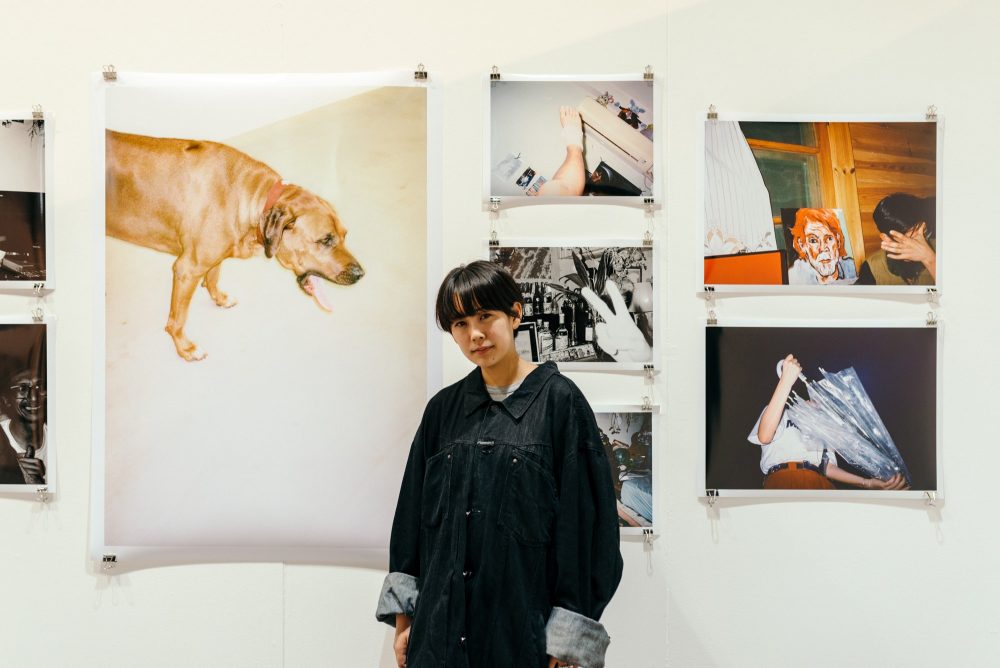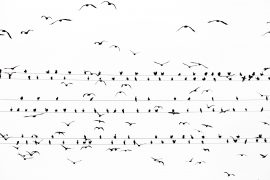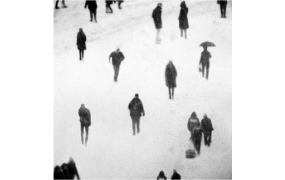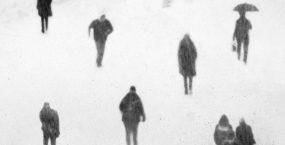Yoko Kusano is a photographer known for a consistent snapshot-like style: one that she has maintained since the start of her career. Recipient of the Excellence Award (from Masafumi Sanai) in the 37th Canon New Cosmos photography contest, Kusano continues an active career in photography. Works from her photo collection series “EVERYTHING IS TEMPORARY” were exhibited at “LUMIX MEETS BEYOND 2020 BY JAPANESE PHOTOGRAPHERS #6.” This illustrious photographer’s work appears linked by a common thread – they all appear to be a look into the idea of “death.” Her works depict scenes familiar to her and reflect the nature of reality for those in her generation. I asked Kusano about the gap between space and time inherent in imagery — and what lies beyond it.
Interview=Eisaku Sakai
Photo=Dustin Tierry
―Last year, you embodied your photo series “EVERYTHING IS TEMPORARY” both as a photography book and as a solo exhibition. What was it like to make a photography publication?
Leading up to that, I had received the Excellence Award in the Canon New Cosmos photography contest when I was still in school, and then after graduating I had published photo collection called “UNTITLED.” But at the time I didn’t know you could make a living by doing photography, and I was kind of adrift for a while. I graduated a year and a half later and had some photography jobs. I went to places I’d never heard of and the people I knew from before kept changing.
While working, I took pictures of my everyday life and wanted to imagine them into a new form somehow. But for two years, I didn’t have any clue as to how to do that. And then through a string of good luck, I was able to publish the collection “EVERYTHING IS TEMPORARY.” Since that was my first time working with a proper publisher, I consider that to be my first real photography publication.
―What a unique title.
Thank you. With a title that sure of itself, I don’t think I could have published it at any other time (laughs).
―Were you moved to that title by sheer force of will?
That was part of it. Another part of it was that I was incredibly emotionally unstable.
―What lead you to choose that title?
I tend to worry myself about deciding titles and formulating artist statements, but this time I knew what title I wanted to use before I started. People often say that my photographs “capture a moment,” but everything that one sees is nothing more than an accumulation of moments to begin with. And considering that, clicking the shutter in those moments feels like a blinking of the eye to me – one with intent. We cycle between blinking, waking up in the morning, sleeping at night… it’s truly a repetition of the temporary.
―While your photos are often described as “moments captured from the flow of time” and “a reflection of youth,” memorable again are your photographs of things that appear to capture vestiges of things that have come to an end; like your photograph of a lightly wilted flower. I feel like ephemerality, while the direct opposite of death, at the same time shares similar qualities with death. How do you perceive these two concepts?
I see where people are coming from when they say that my works “capture a moment,” but then again, I perceive every moment to be temporary. In that sense, I don’t consciously think about capturing that moment solely for the sake of it. It’s a similar feeling to when I see kamishibai pages falling down slowly, one by one.
―Does kamishibai represent the passage of time?
Yes. Time in kamishibai flows much faster than everyday life. Pictures with fast-paced frame layouts convey a lot of action to them, but my photography isn’t full of colorful energy like that. People are moving in pictures, but I realized that I can’t feel their energy. It’s like if I take a photo of rice, for example: I don’t think it looks very tasty (laughs). When you look at the flow of things from a removed, bird’s-eye perspective, you don’t feel the energy in that speed of movement.
―Nowadays, I think photographs that best represent ephemerality are taken on iPhones. They seem to be statements – this is where I am, look at this thing. I find myself wondering – is your photography present and “in the moment?”
Listening to you say that, I realize that I also take photos on my iPhone to tell people where I am: to take pictures with my friends and send them to others. I at times use them as tools; the photos function as images files containing information. With film photography, you have the image in the form of negatives. But from the time you take the photograph, you have to soak and develop it; it takes an hour or two to see the image appear in full. I wonder if some of the depth captured in that moment gets lost through that process. And you have to take 36 photographs to be able to witness what you’ve taken.
―In your statement “EVERYTHING IS TEMPORARY,” there was a certain phrase: “Oblivion is more distant than death…” What does this “distance” mean?
Well, starting with the part about “death,” the fact that my father died is probably relevant. Just after the Fukushima disaster on March 11th, my paternal grandfather told us that my father had been urgently rushed to the hospital due to cancer on March 14th. All modes of transportation were still halted at that point, so in the end I wasn’t able to be there for him at his deathbed.
My mom used to tell me stories about my father when I was a child, but I hadn’t seen him since I was three years old, so I didn’t really know him. When I found out he died, it didn’t feel real and I wasn’t sad. His existence had been like a mere shadow in my life. My grandfather found pictures from when my mom and dad met when he was going through my dad’s things. It was usually my dad taking the pictures, so mostly we found photos of my mom and me. That was when I first felt my father’s presence.

LUMIX MEETS BEYOND 2020 BY JAPANESE PHOTOGRAPHERS #6 in Amsterdam (Photograph by Shinji Otani)
―I see.
And yet, that only made him feel even more distant. As he became more real to me, the feeling of loss became stronger — it was strange and a little sad. He’s no longer with us. And although I didn’t feel that way before, he began to feel real to me by looking at his photographs and seeing where he had been. I felt that very poignantly.
―Perhaps it’s because fathers are one of the closest people in our lives — maybe the same thing wouldn’t have happened if it was just an acquaintance’s photographs. Yet, you still felt distant from him.
Yes. Some people felt a kind of ephemerality looking at my work after the earthquake since I’m from Fukushima, but that ephemerality had more to do with my father than the earthquake. At the time, I found photographs so frightening. A bundle of photographs is like a cluster of thoughts. I’m smiling in the photo, and my father is behind the camera.
―It’s true that most people aren’t paying much attention to the person taking the pictures, but if it’s someone close to you then you’ll probably be more aware of them.
That was around when I started taking photos. By the time “EVERYTHING IS TEMPORARY” came out, I was able to put words to my feeling: that forgetting is more distant than death. Death is not some abstract concept — it’s just something that happens where all humans and living things happen to pass through this checkpoint of “death.” It makes me think that death is not so distant, after all. We will completely understand death once we arrive to that checkpoint; it’s close to us. But to forget, now that’s terrifying — when what we’re supposed to remember just disappears.
―There’s a Latin phrase, “Memento Mori,” which means “do not forget death.” But maybe we should also have one that means “don’t forget what it means to forget.”
Yes, definitely. While there are good things about the process of forgetting, oblivion is truly the realm farthest away from us.
―In your statement, a certain phrase comes up repeatedly: “the future is here.” Is there any reason for this?
I find that taking detailed, varied photographs, as well as the act of taking a photograph itself, is quite similar to progressing towards the future. Like when I take a picture of withering flowers, I understand that they will continue to wither and die. Or when I photograph a runner, I understand that in reality, he or she will continue running further ahead. There aren’t many things that you take a picture of and they just stay that way forever. Because I’m taking pictures in the midst of a forward-moving world, it makes me wonder if I’m suppressing the future in a way.
―I see — your photography is a way to confirm that you’re still running ahead. I feel like your photos are based on an axis of time that looks towards the long term, almost as if to turn eyes towards something distant. Do you know what you’ll make next?
I want to make something about my father. I’m not sure whether it’ll be my next project, but I must do what’s most important to me. And I think that that he was the catalyst that helped me connect to photography the most.
While I usually take photos of familiar things, I don’t feel very close to them. It just feels like a moment where everything fell into place, where I just happened there and holding a camera. But in general, everything feels far away from me. It feels like I’m throwing a ball at a hill with nobody on it, and I want the ball to go further, to somewhere I don’t know.
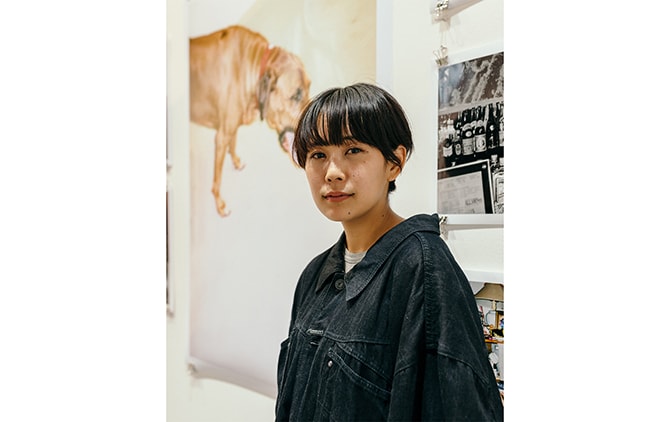
Yoko Kusano
Born in Fukushima in 1993. Kusano studied graphic design at Kuwasawa Design School. She photographed extensively while college and was selected by Masafumi Sanai for an Excellence Award in Canon New Cosmos of Photography 2014. Since then, she has been working in a variety of media with a focus on fashion and lifestyle magazines. Her first book, “EVERYTHING IS TEMPORARY ” was published in 2017 and her latest book “Across the Sea “was published by Roshin Books in 2018.
http://kusanoyoko.tumblr.com/





